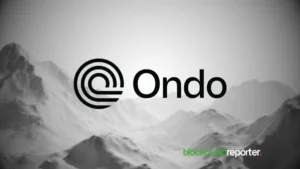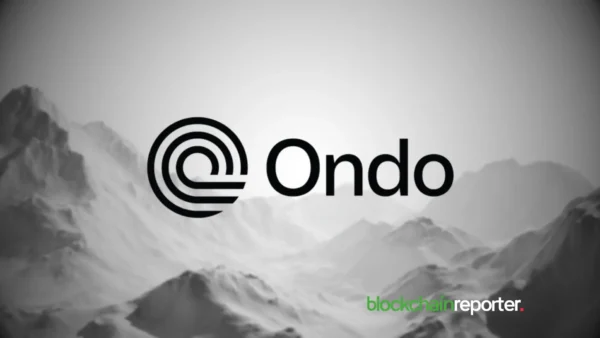
Crypto enthusiasts are well aware of the biggest blockchain ecosystems and the opportunities for trading and investing they provide. Ethereum, the grandfather of the smart contract blockchains, is known for its extensive decentralized finance, gaming and NFT ecosystems, made up of thousands of dApps that cover every possible use case involving crypto.
No doubt, most are only too familiar with rival networks such as Solana and Avalanche, and then of course there’s Bitcoin itself, the oldest cryptocurrency of them all, with its new-found smart contract capabilities creating new opportunities for investors there.
But far fewer people realize that these big-name blockchains aren’t the only game in town. In fact, there are numerous lesser-known crypto ecosystems sitting under the radar, and many of them look like real gems, quietly tackling problems that go ignored by mainstream blockchains. With their dedicated infrastructure, these unsung heroes are often much faster and more scalable, making them more efficient and providing fantastic opportunities for early investors.
1: Gleec
Gleec is a decade-old startup that began life in 2015, not as a blockchain, but instead as a secure communications platform. It pivoted to the crypto industry in 2017, and though it still offers an encrypted messaging system called Gleec Chat, these days that’s just one part of a much more extensive ecosystem focused on the Gleec Blockchain.
The ecosystem is centered on the $GLEEC token, which can be purchased from the Gleec BTC Exchange, which is a platform for high-frequency trading of crypto assets. It has also developed the Gleec Wallet, linking that to its Gleec Pay service, which enables token holders to spend their digital money with businesses that accept crypto payments. As part of Gleec Pay, it also offers the Gleec Card, which allows users to easily spend various different cryptocurrencies in physical stores that accept Visa payments.
More recently, Gleec has turned its attention to RWAs with the launch of Raphael Coin. The $RAPH token represents a small share of ownership in the Rafaello masterpiece known as “Recto: Study for the Battle of the Milvian Bridge”. $RAPH token holders are fractional owners of that artwork, helping to participate in the preservation of a cultural masterpiece.
The diversity of Gleec’s blockchain offerings have also helped it get noticed by the government of El Salvador, which became the first country in the world to recognize Bitcoin as legal tender. Shortly after that decision, Gleec became one of the first companies to secure a government license, enabling it to convert BTC payments into U.S. dollars in local stores.
Gleec’s various projects help to showcase the flexibility and scalability of its regulated blockchain while increasing the utility of its native asset.
2: Mosaic Chain
Mosaic Chain is the native blockchain of a decentralized trading platform called Mosaic Alpha, which caters to traders of all levels, including total novices and the most experienced veterans. It’s a parachain within the broader Polkadot ecosystem, customized specifically for high-frequency token swaps.
The project’s overriding goal is to make crypto trading easier and more accessible. Unlike other platforms, which tend to gloss over the reality that it’s very difficult for traders to make a consistent profit, Mosaic Alpha makes it clear to new users that trading crypto is fraught with risk, and many people end up losing money.
To get around this, it’s focused on copy trading, where new traders who lack experience can simply pay a very small fee in $MOSAIC tokens to copy the trading strategies of more experienced users.
The way it works is, experienced traders create and manage what Mosaic calls “token baskets”, which are made up of multiple digital assets. Other users can pay to invest their own money in these baskets, with a small fee going to the basket creator. However, unlike other copy trading platforms where the user is always guaranteed to receive these fees, Mosaic only pays out to traders who consistently deliver solid returns to investors, creating a strong incentive for them to stay on top of things and maintain their high level of performance.
Pro traders are also incentivized to create educational material in the shape of blog posts, videos and tutorials. The aim of this content is to teach newbies how to trade more successfully, while driving traffic to their profiles and their investment baskets.
3: ICB Labs
A pioneering blockchain research organization, ICB Labs is the creator of the ICB Blockchain, which is the home of ICB Verse, a metaverse platform that leans heavily on artificial intelligence to create more immersive educational experiences. It’s also involved in decentralized identities, NFT projects and real estate tokenization.
ICB Verse is its flagship project, and it’s all about making high-quality education accessible to students located anywhere in the world. To partake in metaverse learning, students are required to purchase an ICB Verse NFT, which unlocks access to its virtual classrooms, where anyone can learn in an interactive environment. The advantage of teaching in a virtual world is that it’s much more immersive. For instance, chemistry lessons might be held inside virtual laboratories that can simulate almost any kind of experiment involving different chemicals at much lower costs. Meanwhile, history lessons can literally bring students back in time, allowing them to learn about the roots of democracy at the Parthenon in Ancient Athens, or visit the frontlines of the Somme during World War One.
AI plays a huge role in ICB Verse too, with one of the most exciting innovations being AI clones. Imagine learning about physics with Albert Einstein or Isaac Newton, or studying art with masters such as Picasso. This kind of experience can only happen in the metaverse,
Aside from education, ICB Labs has created a decentralized identity system based on KYC NFTs, where users can provide their identity, such as a passport and a document proving their address, and have it verified anonymously. Once done, they’ll be issued with a KYC NFT that proves their identity, allowing them to interact with various protocols on the ICB chain in full secrecy.
ICB’s research has also identified real-world assets as one of the most promising developments in crypto, and is working on using this technology to enable fractional investments in global real estate projects. ICB’s native token is $ICB, which serves as the primary payment mechanism in the ICB Verse and for tokenized real estate transactions and other services within its growing ecosystem.
Don’t Ignore The Little Guys
The blockchain industry has grown into a vast universe, and while the likes of Bitcoin and Ethereum will be hard to surpass, there’s an awful lot of innovation being done in some of the lesser-known crypto ecosystems. Many of these smaller blockchain projects can be more efficient when it comes to specialized use cases such as copy trading, metaverse education and RWAs, due to their laser focus on solving the key challenges around them.
We live in a world where every industry is becoming increasingly digitized, and as technology evolves, some of these niche blockchain ecosystems show clear potential to become the next big thing in crypto.









